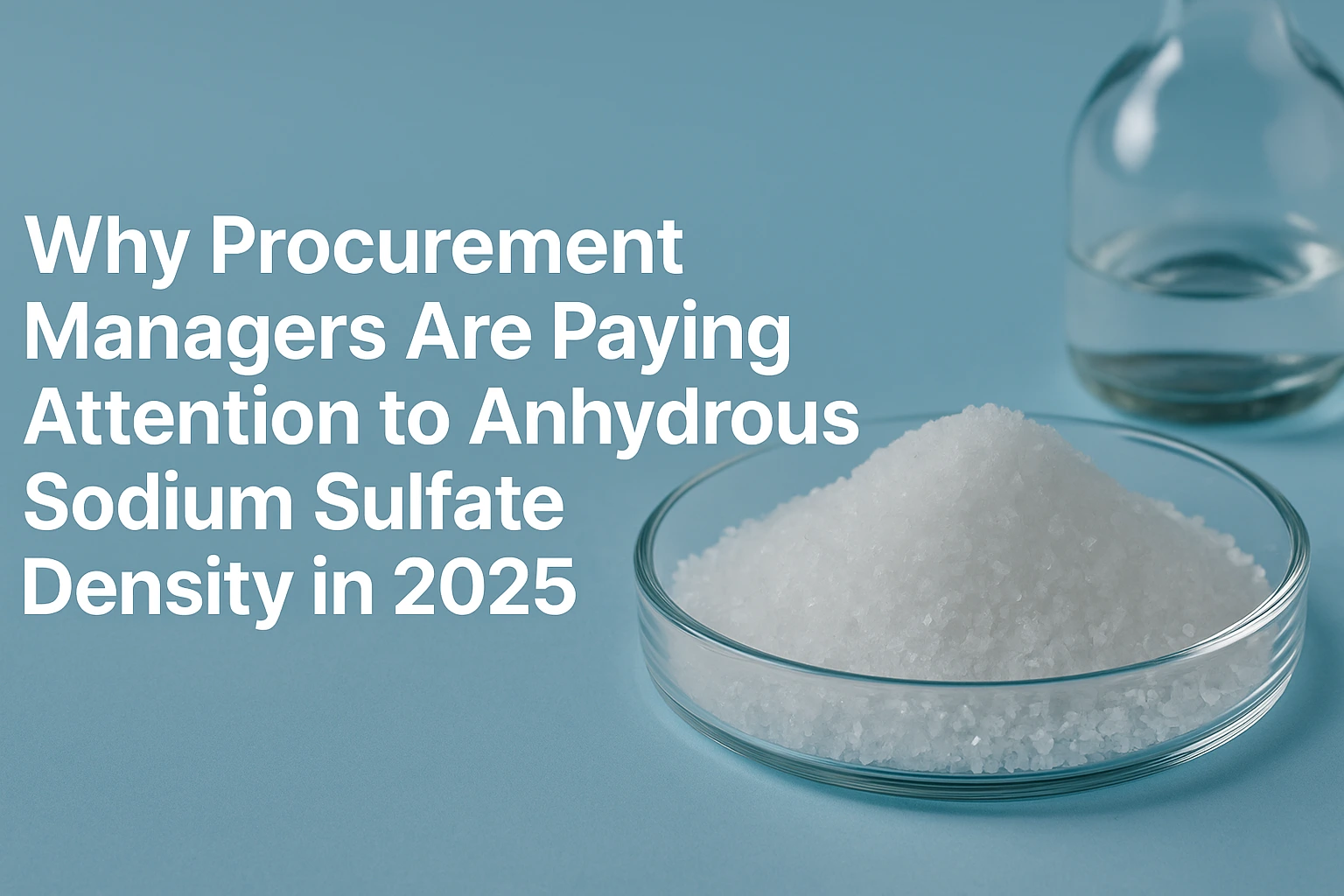1. Introduction: Sodium Sulfate’s Quiet Market Power
Anhydrous sodium sulfate, a white crystalline inorganic salt, remains an undervalued yet critical ingredient across glass, detergent, textile, and chemical manufacturing. Global demand is projected to surpass $1.3 billion in 2025 and reach nearly $2 billion by 2033. While it is a staple raw material for multiple sectors, procurement managers and manufacturers increasingly focus on its density—a crucial property affecting price, transport, storage, and downstream use.
2. Why Density Standards Matter in Sourcing & Applications
The density of anhydrous sodium sulfate (typically 2.66 g/cm³) dictates both purity and performance in industrial use. Higher-density batches are associated with lower moisture (better for glass and detergent production), less caking, and easier bulk handling. Buyers paying for denser, drier product can reduce freight costs and ensure formulation consistency in high-value applications. Conversely, low-density or poorly graded supply risks higher losses, lower quality in finished goods, and greater storage expense.
3. Supply Chains, Pricing, and Regional Dynamics in 2025
Analyzing Q2–Q4 2025, sodium sulfate prices range widely: US $216/MT in the U.S., $360/MT in Germany, and $460/MT in China, with Brazil and India following global volatility. Density affects price directly—premium, high-purity product from well-integrated supply chains commands higher prices, particularly in regions with active glass and detergent industries. Asia-Pacific dominates supply (notably China and India), while price swings are driven by regional demand, feedstock fluctuations, and logistics disruptions (port congestion, storms, energy price spikes).
4. Feedstock, Production, and Regulatory Trends
Modern sodium sulfate production uses both natural (mirabilite) and synthetic (chemical byproduct) sources. Advanced purification, automated grading, and QC help meet density and purity standards for key clients. Environmental regulation—especially on water discharge, byproduct recovery, and energy use—drive a shift to recycled/recovered sodium sulfate, impacting supplier costs and market positioning. Tariffs, changing trade policies, and environmental audits are evolving the supply chain globally.
5. Buyer Considerations: Quality, Logistics, and Supplier Choice
Top buyers source sodium sulfate with validated density specs, batch traceability, and proven logistics support. Price negotiation increasingly hinges on density (kg/m³ or lbs/ft³), with contracts incorporating supply flexibility to address global shocks. Long-term deals with reliable, QMS-certified suppliers in Asia and Europe are favored to hedge against price volatility and shipping disruptions. For specialty applications, buyers prioritize documentation, technical support, and rapid quality feedback.
6. Conclusion: Navigating Sodium Sulfate’s 2025 Market
In 2025, the interplay between anhydrous sodium sulfate density, global sourcing, and price is more visible than ever. Successful procurement strategies hinge on technical validation, logistics agility, and supplier partnerships—empowering buyers for a dynamic and competitive global market. if you looking this product you can talk with us.

Leave a Comment